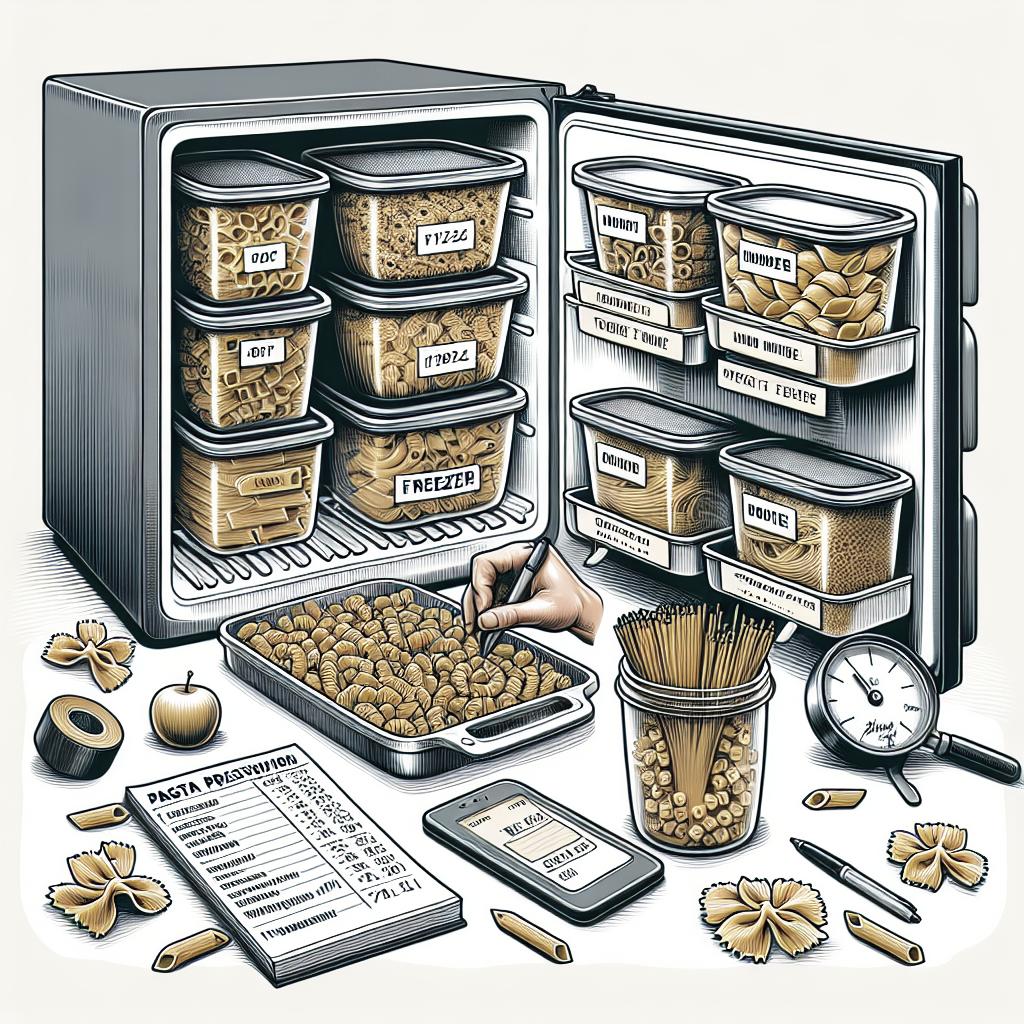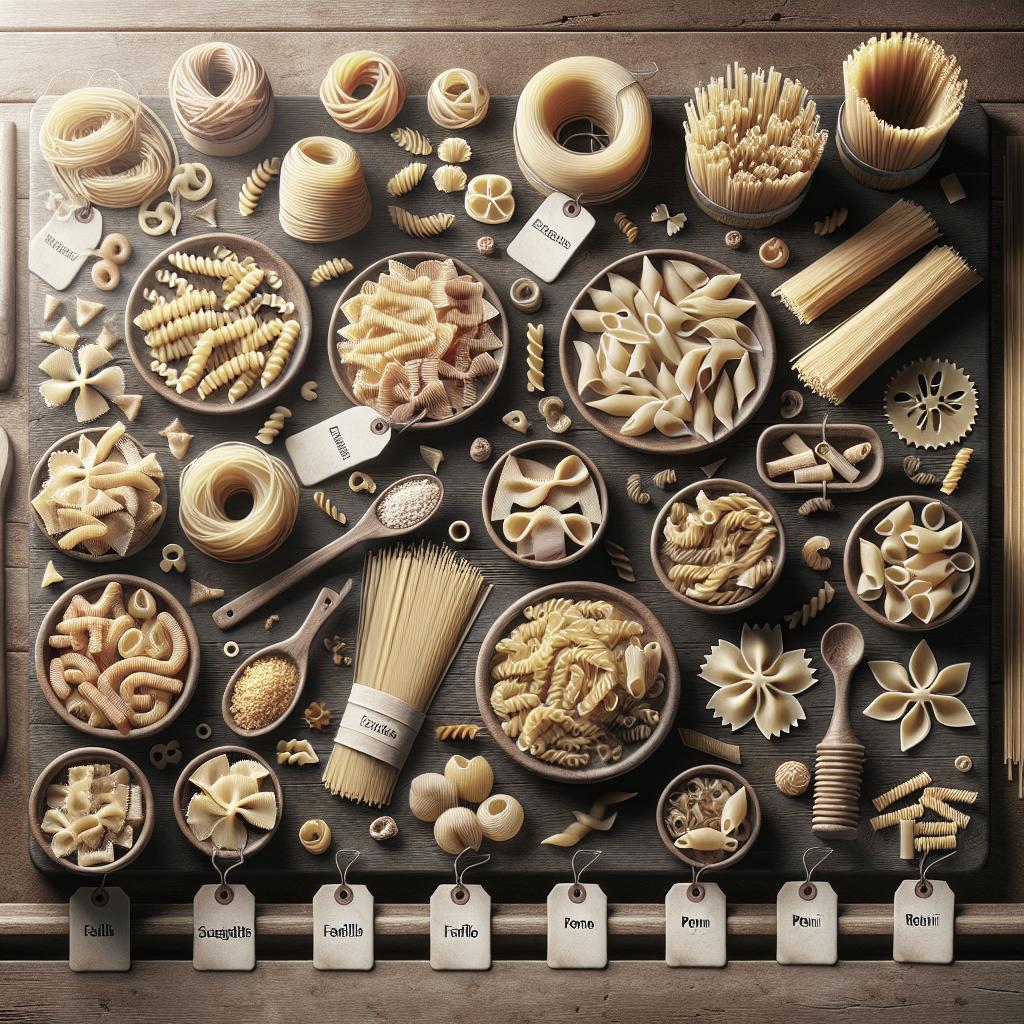“`html
How to Freeze Pasta for Later Use
In our busy lives, finding quick and easy meal solutions is essential. Freezing pasta is a fantastic way to ensure you have a ready meal component at hand without compromising on quality or flavor. This guide will walk you through the steps of keeping cooked pasta fresh for a longer period than the fridge allows. From the optimal methods to freeze and store your noodles to understanding what types of pasta freeze well and how to properly reheat them, this comprehensive article will ensure that your pasta is as delightful when reheated as it was fresh. Plus, you’ll find tips on creative ways to serve your defrosted pasta, expanding your quick-meal options. Dive in to learn all about freezing your favorite Italian staple and more kitchen-savvy tips along the way!
How Long is Pasta Good For In The Fridge?
Pasta is a versatile and convenient meal option, but when stored in the fridge, its shelf life is limited. Generally, cooked pasta can be effectively stored in the refrigerator for about 3 to 5 days. After this period, not only does the texture and taste begin to deteriorate, but the risk of spoilage also increases. It’s crucial to store pasta in an airtight container to prevent it from absorbing any odors from the fridge and to slow down the drying process.
As a staple in many meals, knowing how long pasta is good for in the fridge can greatly influence meal planning and waste reduction. Fortunately, when you realize that even the simplest pasta can become a delicious meal, you’ll find creative ways to employ these noodles in dishes. By extending the life of your pasta through freezing, you can make the most of every batch without worrying about spoilage.
How To Freeze Cooked Pasta
Equipment
Before getting started, gathering the right equipment is essential for successfully freezing pasta. You will need a large pot for boiling, a colander for draining, and airtight ziplock freezer bags or airtight containers. These materials will ensure that your pasta retains its freshness and flavor during the freezing process.
Ingredients
The only ingredient required aside from your cooked pasta is olive oil or a similar cooking oil. This will prevent your noodles from sticking together during the freezing process, making reheating a breeze. For best results, opt for high-quality pasta, as it tends to freeze and thaw with better texture preservation.
Instructions
Step 1: Cook The Pasta
Begin by cooking your pasta according to the package instructions. Aim for an al dente finish, as pasta will continue to soften slightly after freezing and reheating. Once cooked, carefully drain it in a colander.
Step 2: Cool The Pasta
Once drained, immediately rinse the pasta with cold water to halt the cooking process. Toss the pasta with a small amount of olive oil to prevent clumping. Lay it out flat on a baking sheet to cool completely before proceeding.
Step 3: Divide into Ziplock Freezer Bags
When the pasta has cooled, portion it into ziplock freezer bags or airtight containers. Be mindful to leave a bit of space at the top of the bag or container to allow for expansion as the pasta freezes. Label each bag with the date to track storage time easily.
Step 4: Freeze
Place the bags flat in the freezer to save space and facilitate quicker thawing. Once thoroughly frozen, you can stacked them vertically if needed. Store the pasta in the freezer for up to two months for optimal freshness.
Nutrition
Freezing pasta does not significantly alter its nutritional content. However, the calorie count and nutrients can vary based on the type of pasta and added ingredients like oil. Keeping your pasta simply prepared will maintain its nutritional value and keep it versatile for different dishes.
What Kind of Pasta Freezes Well?
Not all pasta types fare equally well in the freezer. Pasta shapes like penne, fusilli, and farfalle freeze efficiently due to their sturdier structure, ensuring they retain their texture post-thaw. On the other hand, more delicate types, such as spaghetti or capellini, may become somewhat mushier after being frozen and reheated.
Whole grain and gluten-free pastas can also be frozen; however, expect slight textural changes. These variations might become a bit tougher or softer, depending on the particular composition. Being aware of these differences allows you to tailor your freezing approach to suit the pasta type, ensuring each bite is delicious.
How To Reheat Frozen Spaghetti or Pasta
Reheating frozen pasta correctly is vital to maintaining its taste and texture. The most effective method is to reheat it by tossing directly in a hot pan with your chosen sauce, stirring gently to distribute the heat evenly. This approach prevents the pasta from becoming waterlogged or overly dry.
Alternatively, placing the frozen pasta in a colander and running it under hot water can speed up the thawing process. Once thawed, finish reheating in a pan or microwave. Checking frequently is recommended to avoid overheating, which can affect flavor and consistency.
Frequently Asked Questions
Some common concerns arise when it comes to freezing pasta, such as whether it’s necessary to defrost it prior to reheating or how long it will keep in the freezer. The good news is that pasta can typically be reheated directly from frozen, bypassing the thawing step. Frozen pasta lasts up to two months, beyond which it may start to lose quality.
What about sauces? It’s possible to freeze pasta with sauces, though cream-based sauces can separate upon thawing. For best results, consider freezing pasta and sauce separately and combining them at the time of reheating.
Other Ideas For Serving Frozen Pasta
Frozen pasta offers a plethora of creative serving options. Consider mixing defrosted pasta into salads for a quick, nutritious meal. Combined with fresh vegetables, herbs, and a light vinaigrette, your pasta can become a refreshing dish.
Another idea is to incorporate the pasta into soups or casseroles, offering an easy way to enrich hearty dishes. Regardless of your culinary creativity, frozen pasta provides flexibility, enabling you to adapt meals to suit your personal taste and dietary needs.
More Freezable Foods
If you find the convenience of frozen pasta appealing, consider exploring other foods that freeze well. Rice, vegetables, and proteins like chicken or seafood can be efficiently preserved in the freezer, providing you with diverse meal components at your fingertips.
Preparing and freezing entire meals can also revolutionize your weekday dinners, allowing for balanced, delicious options with minimal weeknight effort. As with pasta, opt for airtight packaging and proper labeling to maximize freshness and flavor retention in your frozen foods.
Lessons Learned
| Topic | Summary |
|---|---|
| How Long Pasta Lasts in the Fridge | 3 to 5 days when stored in an airtight container. |
| Freezing Cooked Pasta | Cook al dente, cool, portion into ziplock bags, and freeze. |
| Best Pasta Types to Freeze | Sturdier shapes like penne and fusilli maintain texture well. |
| Reheating Instructions | Reheat by tossing in a hot pan or run under hot water. |
| FAQs | No need to defrost before reheating; sauces freeze better separately. |
| Serving Ideas | Use in salads, soups, or casseroles for diverse dishes. |
| Other Freezable Foods | Consider freezing rice, vegetables, and proteins for more meal options. |
“`


